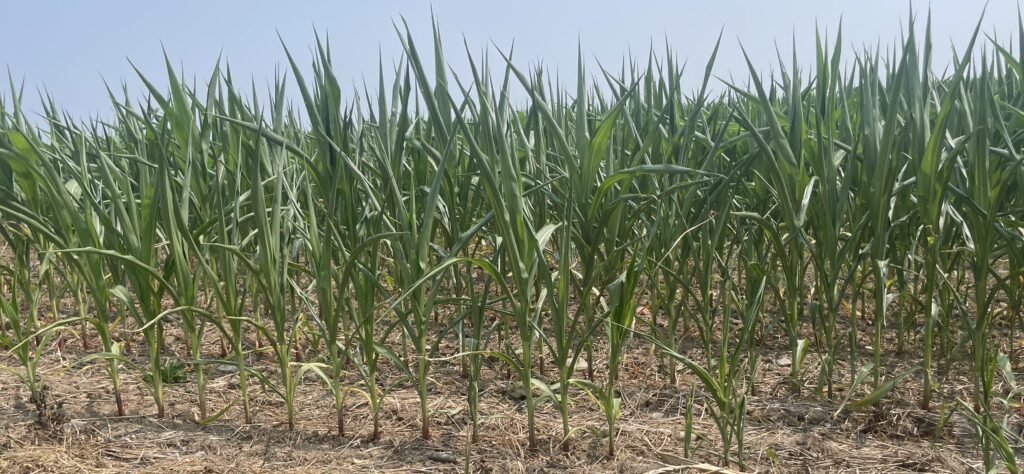 Distressed soybeans wilt in the high Waupoos heat. (Jason Parks/Gazette Staff)
Distressed soybeans wilt in the high Waupoos heat. (Jason Parks/Gazette Staff)
One of the wettest springs on record has turned into the driest of normally dry summers in PEC.
Soil crop farmers are facing losses of $50,000-$100,000 depending on the acreage.
Withered corn stalks resemble onion scapes in the oppressive, and apparently never ending, dry heat. Soybean plantings on marginal lands are in trouble. Some soybean fields on heavier clay have an emerald green glow and decent ground cover, but the top flowers are aborting in the absence of moisture. Pods that have started to develop under the foliage could still produce some beans, but the timeline for a crop-saving rain is short.
And there is nothing in the forecast.
The County’s localized weather systems, or microclimates, exacerbated during drought years, mean rain storms are a patchwork. A rain on Cressy Bayside might never make it to Cressy Lakeside, one or two kilometres away.
One concession road north or south can mean the difference between boom and bust. There’s no perfect way to track precipitation levels.
But there’s been no rain anywhere for three weeks.
Past President of the Prince Edward Federation of Agriculture John Thompson has kept summer precipitation records at the family farm northeast of Picton, at the corner of Fry Road and County Road 5 since 1979.
June and July were the driest months on Elmstein Farm in Mr. Thompson’s nearly 50 years of record keeping.

“The long term average per month is about three inches of rain. Over June and July of 2025, we had a combined 1.34 inches, which is the driest 60-day stretch I’ve seen here,” he said.
Conversely, May was one of the wettest months he’s recorded. A total of 5.5 inches of rain fell at the farm, wreaking havoc with the sowing season.
If the wet spring saw farmers working in intermittent windows dry enough to get crops in the ground, many are now staring out at dusty, dying fields, wondering why they bothered.
If farmers have crop insurance they will not be wiped out by the drought of 2025. Producers can collect insurance payouts based on their 10-year yield average. After good growing seasons in ’23 and ’24, stomaching a drought year is slightly more viable.
“Crop insurance is a life-saver but it’s not the way you prefer to recoup on your inputs and it can only go so far. Plus, if you claim it, this year will count against your ten-year yield average for the next time you need it, so it’s a bit of a losing proposition,” said Mr. Thompson.
For local field crop growers another silver lining of the wet spring was a decent if not bumper crop of winter wheat. But the absence of moisture in June hampered even that.
“My experience is that my wheat came off right about average this year while other farmers are telling me they were slightly above average,” said Mr. Thompson. “The straw was very good which tells farmers that we were lacking one last rain to finish off the wheat completely. Most of us came close to a bumper crop but we just didn’t get that last rain in June.”
The corn crop will be a virtual write off. Is there hope for the beans?
“Soybeans can survive a dry July if we start getting rains around the first of August. But it’s getting late and the forecast doesn’t look promising.”
See it in the newspaper